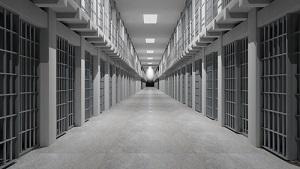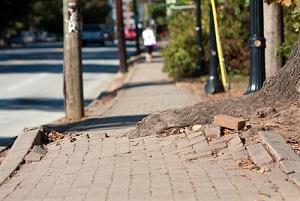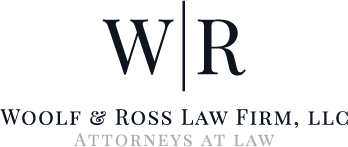Recent Blog Posts
State Announces Plans for Young Adult Prison
 The state of Connecticut, in recent years, has been taken a leadership role in the national conversation regarding criminal justice reform thank, in large part, to the efforts of Governor Dannel Malloy. In the last year, Governor Malloy has focused much of his political attention on building what has become known as his “Second Chance Society,” one that, in his own words is “a little more forgiving” of those who may have broken the law but are willing “to fly right.”
The state of Connecticut, in recent years, has been taken a leadership role in the national conversation regarding criminal justice reform thank, in large part, to the efforts of Governor Dannel Malloy. In the last year, Governor Malloy has focused much of his political attention on building what has become known as his “Second Chance Society,” one that, in his own words is “a little more forgiving” of those who may have broken the law but are willing “to fly right.”
As part of the initiative, penalties have already been reduced for simple drug possession, including the elimination of minimum sentences for nonviolent offenses. Now, Governor Malloy has set his sights on reforming the Connecticut juvenile justice system, aiming to prevent young lawbreakers from being forsaken as career criminals. While some of his ideas regarding juvenile justice have been met with skepticism—and in some cases, outright criticism—the governor and his supporters maintain the average 18-year-old is not mature enough to assume adult criminal responsibility. Lawmakers have yet to act on the juvenile reform proposals, but there is at least one major change in the works anyway.
Verdicts May Be Indicative of Trend Toward Increased Municipal Liability
 For the second time in less than a year, a claimant has successfully sued a Connecticut municipality for injuries caused by unsafe sidewalk conditions. The most recent decision was handed down by a Superior Court jury, finding that the City of Bridgeport had been negligent in maintaining a safe sidewalk, and awarding the woman more than $416,000 in damages.
For the second time in less than a year, a claimant has successfully sued a Connecticut municipality for injuries caused by unsafe sidewalk conditions. The most recent decision was handed down by a Superior Court jury, finding that the City of Bridgeport had been negligent in maintaining a safe sidewalk, and awarding the woman more than $416,000 in damages.
Dangerous Negligence
According to reports, the 69-year-old woman and sister had been walking on a public sidewalk in Bridgeport when she tripped over a portion of the walkway that was raised as much as two inches. As a result of her subsequent fall, the woman broke her left arm, requiring substantial surgery to repair, along with a number of other more superficial injuries. Her lawsuit also claimed that she was left with limited strength and mobility, which has greatly impacted her everyday life.
Connecticut Supreme Court to Decide on Forced DNA Collection
 When properly collected and analyzed, DNA evidence is among the most clear-cut and convincing forensics in any criminal proceeding. Countless cases in the last several decades have been greatly impacted by the biological technology, including those of a large number of previously-convicted defendants who were later exonerated by DNA analysis.
When properly collected and analyzed, DNA evidence is among the most clear-cut and convincing forensics in any criminal proceeding. Countless cases in the last several decades have been greatly impacted by the biological technology, including those of a large number of previously-convicted defendants who were later exonerated by DNA analysis.
Unsurprisingly, the success of such efforts has led all 50 states and the federal government to mandate the collection of DNA samples from at least some categories of convicted offenders, so as to assist in future investigations. Here in Connecticut, however, the state’s authority to use force in collecting DNA was recently brought before the state Supreme Court, promulgated by the appeals of two convicted felons who refused to submit to DNA collection.
Reasonable Force
The first of the two appellants was convicted of robbery in 1997 and was asked to provide a DNA sample under the law currently in place at the time. When he refused, the state filed a motion to be allowed the use of reasonable force to obtain the convicted felon’s DNA, which was granted, though court documents contained an explanation of what constituted reasonable force. The man appealed on the basis that forcing him to submit to DNA collection represented a second punishment for his crime, but the appellate court ruled that the law requiring DNA samples is regulatory, not punitive. Additionally, the appeals court found that, “prohibiting the state from using reasonable force would permit a felon to avoid his or her obligation to provide a DNA sample,” thus hampering the state’s efforts at future investigations.
Governor Asks Sentencing Commission to Review Bail System
 Connecticut Governor Dannel Malloy has become relatively well-known throughout the country over the last few years. Since taking office in January 2011, the Democratic governor has built himself a reputation for his sustained efforts regarding criminal justice reform throughout the state. Impressive results, including a drop of more than 20 percent in the state’s prison population and nearly a 30 percent reduction in violent and property crime, earned Malloy a spot as an invited guest to President Obama’s State of the Union Address earlier this month.
Connecticut Governor Dannel Malloy has become relatively well-known throughout the country over the last few years. Since taking office in January 2011, the Democratic governor has built himself a reputation for his sustained efforts regarding criminal justice reform throughout the state. Impressive results, including a drop of more than 20 percent in the state’s prison population and nearly a 30 percent reduction in violent and property crime, earned Malloy a spot as an invited guest to President Obama’s State of the Union Address earlier this month.
As his reform efforts continue, Governor Malloy is turning his attention to the state’s bail system. In a recent letter to the Connecticut Sentencing Commission, Malloy requested that the commission take up the concern, consider the various options, and make recommendations to the legislature about changes to the existing law. The Sentencing Commission exists primarily as a review and advisory body and includes appointed individuals, as well as the state’s Commissioner of Correction, Chief Public Defender, and other influential officeholders.
Good Samaritan Settles Merritt Parkway Negligence Case for $1 Million
 After four years of medical bills and legal wrangling, a Connecticut man will finally be receiving just over $1 million in a settlement stemming from an incident that occurred as the man and his friends were helping a disabled vehicle on Route 15 in Stratford. The accident left the man with 13 fractures and a degree of permanent disability due to injuries to his cervical spine and shoulder. The case highlights a number of important concerns regarding personal injury claims, including negligence and contributory fault, which ultimately played a role in arriving at a reasonable settlement.
After four years of medical bills and legal wrangling, a Connecticut man will finally be receiving just over $1 million in a settlement stemming from an incident that occurred as the man and his friends were helping a disabled vehicle on Route 15 in Stratford. The accident left the man with 13 fractures and a degree of permanent disability due to injuries to his cervical spine and shoulder. The case highlights a number of important concerns regarding personal injury claims, including negligence and contributory fault, which ultimately played a role in arriving at a reasonable settlement.
How It Happened
In October 2011, the claimant, along with several friends, were traveling northbound on the Merritt Parkway when a vehicle in front of them ran out of gas. Along that particular stretch of the parkway, there is very little room along the shoulder, so the disabled vehicle was forced to stop partially in the right-hand travel lane. The man and his friends stopped to offer their assistance, helping to push the vehicle to a safer location. As the Good Samaritans attempted to get back into their own vehicle, still partially blocking the travel lane, the defendant’s vehicle slammed into their car, seriously injuring the claimant. The man suffered multiple fractures to his spine and ribs, along with numerous internal injuries.
Judge Criticizes Use of Cellphone Data By Connecticut Police
 According to estimates from the Pew Research Center, nine out of ten American adults own a cell phone. Some two-thirds of them are smartphones with the ability to run many of the same functions of a desktop computer with the added convenience of local and global positioning systems. In June 2014, the U.S. Supreme Court recognized the privacy concerns present with such devices and ruled that law enforcement must obtain a warrant before conducting a search of a suspect’s cellphone. The line, however, is a more unclear when it comes to using cellphone data in a criminal investigation, as highlighted in a recent ruling by a Connecticut Superior Court judge.
According to estimates from the Pew Research Center, nine out of ten American adults own a cell phone. Some two-thirds of them are smartphones with the ability to run many of the same functions of a desktop computer with the added convenience of local and global positioning systems. In June 2014, the U.S. Supreme Court recognized the privacy concerns present with such devices and ruled that law enforcement must obtain a warrant before conducting a search of a suspect’s cellphone. The line, however, is a more unclear when it comes to using cellphone data in a criminal investigation, as highlighted in a recent ruling by a Connecticut Superior Court judge.
Lacking Law
In 2005, the Connecticut state legislature quietly passed a law that allows law enforcement to access the cell phone records of citizens without necessarily requiring a warrant. Throughout the last decade, police have obtained more than 14,000 orders to access records, many of which permitted police to read the content of text messages and track the phone’s location, according to David McGuire, a staff attorney for the American Civil Liberties Union (ACLU) of Connecticut. He also indicated that the law requires that the owner of the phone be notified when his or her data is accessed, but that the requirement seems to be often ignored.
Federal Appeals Court Upholds $1 Excessive Force Verdict
 In a case that began nearly a decade ago, a federal appellate court recently rejected a New Haven man’s appeal of a $1 verdict. The nominal verdict was awarded in the man’s civil suit, during which he claimed the use of excessive force by police officers from Hamden and New Haven in the course of his 2006 arrest for assault.
In a case that began nearly a decade ago, a federal appellate court recently rejected a New Haven man’s appeal of a $1 verdict. The nominal verdict was awarded in the man’s civil suit, during which he claimed the use of excessive force by police officers from Hamden and New Haven in the course of his 2006 arrest for assault.
According to reports, police were called to the man’s house, and when he refused to answer questions, a warrant was obtained for his arrest. When police attempted to arrest him, the man tried to flee in his car. Police stopped the vehicle and removed the man, who reportedly swung at officers and tried to run. The man grabbed a tree branch, swinging it like a baseball bat, trying to fend off police. In the end, four officers subdued and arrested him.
Legal Process
Although the charges against the man from that particular arrest were dropped, the arrest was a violation of an earlier probation, leading to six and a half years in prison. The man sued the arresting officers, claiming excessive force and intentional infliction of emotional distress. He began the process with the help of a pro bono attorney, but by the beginning of the trial he represented himself. Based on the evidence presented, the jury found that one of the officers did, in fact, assault the man but only awarded nominal damages in the amount of $1.
Before You Go, Clear the Snow
 While forecasts for this year’s winter indicate that weather will be significantly milder than the last several years, the ice and snow will eventually reach the East Coast. It would not be winter in Connecticut without at least a few squalls and a snowstorm or two. When the snow does fly, driving conditions can deteriorate quickly, with slush and slippery roads contributing to thousands of motor vehicle accidents every year. Liability for a weather-related car accident can often be difficult to establish clearly, but in certain situations the State provides some fairly specific guidance.
While forecasts for this year’s winter indicate that weather will be significantly milder than the last several years, the ice and snow will eventually reach the East Coast. It would not be winter in Connecticut without at least a few squalls and a snowstorm or two. When the snow does fly, driving conditions can deteriorate quickly, with slush and slippery roads contributing to thousands of motor vehicle accidents every year. Liability for a weather-related car accident can often be difficult to establish clearly, but in certain situations the State provides some fairly specific guidance.
Scrape the Ice and Brush the Snow
For many people, the morning routine especially during the winter generally includes going out and starting the car a few minutes before it is actually time to leave. Those fortunate enough to have remote starters can do so without even setting foot outside. Others find themselves rushing out the door with no time to spare, taking just a few seconds to scrape enough of the ice and snow away so they can see enough to drive. According to the law, just enough is not enough and such drivers can face fines and liability for damages caused by this negligence.
Plan Ahead to Get Home Safely This Holiday Season
 The winter holidays are a time for getting together with family, friends, and loved ones. For many, Christmas and New Year’s celebrations involve alcohol, which, combined with the travel that is often necessary, can create serious dangers on area roadways.
The winter holidays are a time for getting together with family, friends, and loved ones. For many, Christmas and New Year’s celebrations involve alcohol, which, combined with the travel that is often necessary, can create serious dangers on area roadways.
According to estimates from the National Highway Traffic and Safety Administration, drunk-driving related fatalities increase by nearly 25 percent during the Christmas holiday period. An average of 45 deaths involving alcohol-impaired drivers occur every day between Christmas Eve and New Year’s Day, with many thousands more injured. While we certainly encourage you to enjoy the holidays this year, we would like to remind you to make arrangements as needed so that you can avoid the dangers of drunk driving.
Choose a Designated Driver or Be One
Awareness campaigns and educational programs for years have been reminding those who drink to always ride with someone who has not been drinking. One of the best ways to prepare for safe travels is to have a plan in place ahead of time about who will be driving. The driver can then make decisions accordingly during the festivities to ensure that everyone under his or her care gets home safely. If others have been the designated driver in the past, maybe this year, you can return the favor.
Justice Initiative to Join the Fight Against Sex Trafficking in Connecticut
 Last month, Connecticut U.S. Attorney Deirdre Daly announced the launch of the Connecticut Human Trafficking Task Force, a group dedicated to combatting sexual and labor exploitation for financial gain around the state. The issue of sex trafficking, in particular, is quickly reaching alarming levels of concern, as the Connecticut Department of Children and Families has received more than 80 referrals of possible trafficking victims just this year.
Last month, Connecticut U.S. Attorney Deirdre Daly announced the launch of the Connecticut Human Trafficking Task Force, a group dedicated to combatting sexual and labor exploitation for financial gain around the state. The issue of sex trafficking, in particular, is quickly reaching alarming levels of concern, as the Connecticut Department of Children and Families has received more than 80 referrals of possible trafficking victims just this year.
“Modern-Day Slavery”
At the press conference announcing the creation of the task force, Daly made very strong comments regarding the seriousness of the problem. “Over the last several years,” she said, “it has become increasingly clear that human trafficking, and especially the sex trafficking of minors, this cruel victimization of defenseless young girls and sometimes boys, is a form of modern-day slavery.” While law enforcement efforts continue, she observed, the Internet has made the buying and selling of sex with children more available than ever before.






